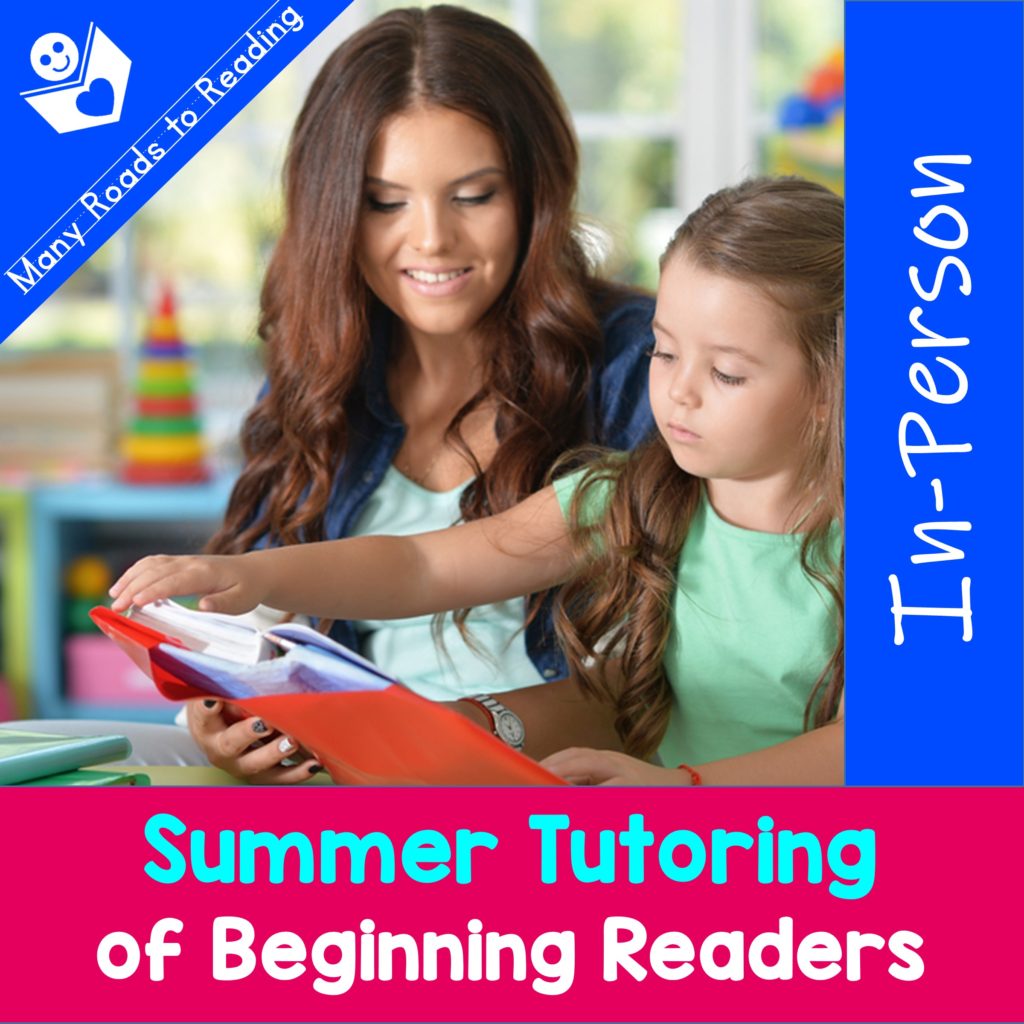What a time for early literacy tutors! Because of the last two years of COVID and the so-called learning gap, tutors are in great demand right now.
Isn’t it wonderful to know that we can help? But, due to the changes in our students’ lives during the pandemic, we might want to tweak our approach to teaching beginning readers.
In Tutoring Post-COVID Part 1: Assessment, I discussed adaptations we can make to our testing routines. In this post, I will talk about adaptations we can make to our teaching.
Establish Trust
I’m sure you know how important it is to establish trust with any student in our early reading lessons. In a sense, we are taking them on a journey to a new place where they have never been before. They won’t want to go on this trip if they don’t trust their guide.
- In Part 1, I talked about how important it is to evaluate the child’s attitude toward reading, their frustration tolerance, and their ability to take risks. It’s important to consider these factors when trying to establish trust with a new student. If we start teaching a youngster before they are comfortable with us or push them too hard too soon, we may encounter a reluctant reader.
- One way to begin to create rapport with the student is to have a meet-and-greet session with them and their parent. This can be in person or even on Zoom. Either way, show the student what a sample lesson will be like, where they will be sitting (if in person), what materials you might use. Familiarity helps.
- Another approach is to start each lesson with a check-in. How are they? Is there anything happening in their life that they want to talk about? (Of course you have to be careful that you aren’t working with a procrastinator who will milk this moment for all it’s worth, to get out of reading).
- Sometimes fearful children benefit from having their stuffed animal or action figure attend the lessons. They can read to the “friend” on the desk, or might feel more comfortable having the “friend” do the reading that day.
- Personalizing your reading and writing activities also builds trust for beginning readers. Write their names on removable tape in books or even create books about them. You can also personalize the writing prompts or make a book out of their written work. Bring their favorite colors, toys, and activities into the content of your lessons. Photos from home are a huge help here.
See my previous post: Online Tutoring: Keeping It Personal.
Keep It Easy
Start your lessons “easy” and build confidence. This is so important now, especially with the very young children we work with. Help them take the next step, but remember that children can’t all be pushed to the same degree. Keep the whole child in mind, not just their reading skills.
Keeping your teaching easy is trickier than you might think. If you make it too easy, some kids will feel that you are dumbing-down the lesson for them. Set up the lesson for their success. Strike a balance between accessibility and challenge.
- Teach on the instructional or easy reading level.
- Teaching fluency will go a long way toward making the child feel like a real reader. See my previous post, Fluency: The Domino Effect.
- Model when teaching something new. Bring the child in slowly. Do it first by yourself, next with the child, and finally let the child take over. I do, we do, you do. Have your students chomping at the bit to take over and show you what they can do.
- If you choose a book that is too hard, explain that you made a mistake and grabbed the wrong book.
- Make personalized books about students, and have them make book, too.
- Share reading and writing activities. Take turns reading and writing sometimes. I like to play the beeping game to help kids pay attention while I am taking my turn reading. I will read, but they have to know where I am in the book and be ready to read when I go Beep!
- When a child is struggling, be willing to drop back in reading levels until they reestablish their confidence.
- Explain that reading is a skill that people develop gradually, not right away. If kids need it, I introduce the reading ladder (See FREE resource below) and explain that it takes years to get to the top and know how to read. When students have worked hard during a lesson, they like to ask, Did I move up on the reading ladder today?
Goals are great, but try to stay in the present and keep a close eye on your students’ progress. Consider the whole child.
Stay Positive
Some of us tutors have trouble staying positive as we teach beginning readers. I, for one, tend to pay a lot of attention to errors the child makes, probably because I love diagnosing reading difficulties.
During normal times, I might address mistakes made by students when they finish reading or even at point of error, but if the student lacks confidence, this might not be a time to draw attention to the misreading. Jot the error down on your lesson record and teach to it during the next lesson, but without referring to their error. Also consider whether it’s because you made the lesson too hard.
It’s important right now to focus on the child’s successes. They may not be aware of what they can do in reading!
At the end of the lesson, always go over what the student has learned in the lesson. What did you learn today? This might be a new strategy, a new skill, or new content (e.g., sight words or letter identification). If they can’t tell you what they learned today, be sure to tell them.
You can even ask them again before the next lesson, What did you learn last time? This will both remind them of what they know or can do, and prime them to use this new knowledge.
Add Humor
Adding humor to your tutoring sessions goes a long way toward helping the reluctant reader. Insert a few jokes before and after the lesson, or between activities. I find that putting on my Silly Hat helps to put me in the mode to be humorous.
Maybe you don’t think you’re the jokester type, or maybe the child is so nervous about reading that they don’t have much of a sense of humor in the tutoring setting. Here are a few specific things you can try saying to the fearful reader, keeping in mind that not all children will understand all forms of humor.
- Stop making so much progress! You’re going to put me out of a job?
- Once they understand that you are just kidding, you can just add later (with a sob): Please don’t put me out of a job! I’m going to lose my job!
- If they are upset about not being able to read something or about a mistake they made, say: Yippee! You made a mistake! That means you are learning.
- Tell them they can play a game at the end of the lesson, but explain that you don’t like to waste too much time on games. Then, when they are doing their reading, you can say, Stop doing such a good job! I don’t want to play a game at the end of the lesson! Or say, Please don’t read! Please don’t write!
- Tell the student they can get a point every time they make a mistake. If they get to 10, they can play a game. You can’t do this much, because the kids will make mistakes on purpose, but even that becomes funny after a while.
- Make silly mistakes yourself, and laugh at them together.
Adding humor to your tutoring can help calm nervous readers and keep you and your students relaxed. Be cautious about the type of humor you use. Adjust the type of humor to the age of the student. Younger students are more apt to relate to physical humor and might not understand sarcasm and puns unless they involve slapstick or silly tone of voice.
In summary
During your post-COVID tutoring sessions, you may want to make some adjustments to your normal teaching approaches.
- Imagine that you are taking the student on a journey to an unfamiliar place.
- Establish trust with the student.
- Keep your lessons easy.
- Stay positive.
- Add humor to your tutoring sessions.
Don’t forget to be good to yourself. You have been going through the pandemic also! Do the best you can in every tutoring session, but don’t blame yourself if you forgot to do something you meant to do or did something you were trying not to do.
I like to keep a section in my lesson plan for notes about what I want to do in the next lesson. These can be errors made by the child, as discussed above, or things I want to remember to do as a teacher. Having a focus for each lesson also helps. Lastly, ask yourself after each lesson: How did I adjust my teaching to the child’s needs today?









Leave a Reply